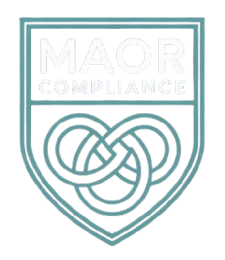ISO 27001 implementation can transform how your company handles information security — but for many SMEs, especially under pressure to get certified quickly, the path is filled with confusion, delays, and avoidable mistakes.
Based on our experience as auditors and implementers, here are the 10 most common challenges businesses face — and how to overcome them.
- No Clear Starting Point
Most teams don’t know where to begin. Should they write policies first? Assess risks? Buy software?
Fix: Start with a gap analysis — a structured review that compares your current security posture to ISO 27001 requirements. This keeps you from wasting time on the wrong tasks.
- Confusion About What Needs Documenting
ISO 27001 doesn’t demand piles of paperwork, but it does require the right documents to show your system is real and repeatable.
Fix: Focus on the core mandatory documents like your ISMS scope, Statement of Applicability, risk treatment plan, and internal audit records. Avoid over-documentation. Clarity and consistency matter more than volume.
- Lack of Internal Expertise
Many SMEs don’t have in-house compliance or security specialists, and struggle to interpret ISO 27001’s requirements.
Fix: Use guidance from experts or tools built by auditors (like ours). These break down the standard into simple, action-based steps — without the jargon.
- Risk Assessment Done Poorly (or Not at All)
Risk management is the heart of ISO 27001, but many teams don’t know how to identify, rate, or treat security risks properly.
Fix: Use a risk register template or platform with built-in examples. Start small, and ensure each risk is clearly linked to controls and decisions.
- Too Many Tools, Not Enough Control
Spreadsheets, Word docs, and scattered files lead to errors and missed requirements.
Fix: Use a centralized system to manage your controls, risks, documents, audits, and actions in one place. This saves time and ensures accountability.
- No Leadership Buy-In
Without visible support from leadership, ISO 27001 becomes “just an IT project” — and usually stalls.
Fix: Show leadership how ISO 27001 isn’t just about compliance — it protects business continuity, enhances reputation, and helps win contracts.
- Trying to Do Everything at Once
Under time pressure, teams try to tackle all 114 controls in Annex A — and quickly burn out.
Fix: Prioritize high-impact, high-risk areas first. You don’t need perfection to get certified — you need a system that’s improving and auditable.
- Fear of the Audit
The external audit seems intimidating, especially for first-timers.
Fix: Do a mock audit or readiness check internally or with a trusted partner. Auditors aren’t looking for perfection — they want to see understanding, evidence, and improvement.
- Staff Are Left Out
One of the most overlooked areas is staff training and awareness — a major certification requirement.
Fix: Train staff on basic security, get them to acknowledge key policies, and build a culture of responsibility. You’ll not only meet the standard — you’ll reduce real-world risks.
- Failure to Maintain the Syst’em
ISO 27001 isn’t a one-time project — it’s an ongoing cycle. Neglecting maintenance leads to failed surveillance audits.
Fix: Use tools that send reminders, track actions, and guide periodic reviews. Build in a routine for incident tracking, risk reviews, and document updates.
✅ Final Word:
ISO 27001 doesn’t have to be overwhelming. With the right guidance, clear tools, and focused effort, you can get certified — and stay certified — without burning out your team or drowning in paperwork.

